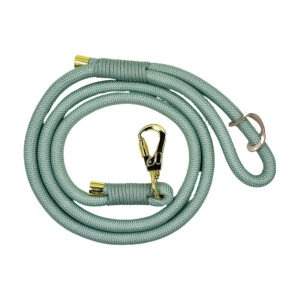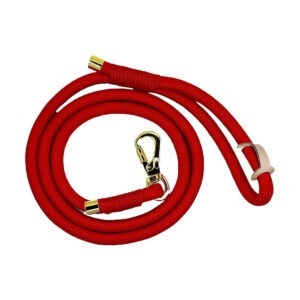Summer storms, while being a source of relief from the heat, can often bring about fear and anxiety in our canine companions. The loud thunderclaps, bright flashes of lightning, and even the changes in atmospheric pressure can distress dogs, causing behaviors such as trembling, whining, or seeking refuge in enclosed spaces. For pet parents, comprehending their dogs’ fear and discovering effective ways to provide comfort during these tumultuous weather conditions is crucial for the well-being of their four-legged friends. This comprehensive guide will delve into understanding why dogs fear storms, recognizing their anxious behaviors, offering immediate comfort during storms, and training techniques to alleviate their fear. Moreover, we’ll discuss preventive measures for the storm season, product suggestions for anxiety relief, when to reach out to professionals and share success stories from other dog owners.
Understanding Your Dog’s Fear
When a storm brews, it’s not just the audible thunder or visible lightning that can scare dogs. In fact, their heightened senses make them aware of an impending storm much before their human counterparts. Dogs can sense changes in barometric pressure, wind patterns, and even detect the subtle shift in static electricity levels, all of which can trigger a fearful response. This fear is a natural survival instinct; from an evolutionary perspective, wild animals react to storms as a signal to seek shelter or escape danger.
Identifying the signs of fear and anxiety in your dog is the first step to helping them cope. The indications can vary from one dog to another. Some common signs of storm anxiety include:
Some of our latest products...
- Panting, shaking, or drooling
- Pacing or trying to escape
- Seeking human comfort or hiding in confined spaces
- Barking, whining, or howling
- Destructive behavior, such as chewing or scratching at doors and windows
Understanding your dog’s unique fear responses to storms will provide a foundation for effectively comforting them and training them to cope better. However, keep in mind that these are general signs and can also occur due to other types of stress or health issues. If you observe these behaviors frequently, even in non-storm situations, it might be a good idea to consult a vet.
General Tips for Comforting Your Dog During Storms
Your immediate response when a storm hits can make a significant difference in comforting your anxious dog. Here are some steps to take:
- Maintain Composure: Your dog takes cues from your behavior. If you act anxious or over-protective, it may amplify their stress. Stay calm, act normally, and reassure your dog with your composed demeanor.
- Provide Distractions: Engaging your dog in their favorite activity or game can help divert their attention. Play with them, give them their favorite toy, or introduce puzzle feeders.
- Use White Noise or Music: Drowning out the storm sounds with calming music, white noise, or even a loud fan can reduce your dog’s focus on the unsettling noises.
- Comfort Them: If your dog seeks comfort from you, provide it. Cuddle them, talk to them soothingly, or simply sit with them. Avoid reinforcing their fear with phrases like “It’s okay” in a worried tone, as they can pick up on your anxiety.
- Safe Spaces: Allow your dog to retreat to their safe space, be it their crate, under the furniture, or any other area where they feel secure. If your dog doesn’t have a safe space, create one. A quiet, dark, and enclosed area can provide a sense of safety.
- Counter-conditioning: Treats or high-value rewards can be used to create a positive association with the noise of thunder. Give your dog a treat each time there’s thunder, and they will start associating the noise with something positive.
Remember, what works for one dog might not work for another. It might take a bit of trial and error to find out what helps your dog the most. These strategies are meant for immediate relief and might not work for all dogs or for those with severe anxiety. In such cases, a long-term strategy, like a training program, may be necessary.
Training Techniques to Help Your Dog Cope with Storms
In addition to immediate measures, there are several training techniques that can help your dog gradually overcome their fear of storms. These should ideally be done over time, and not during an actual storm.
- Desensitization: This involves exposing your dog to recorded storm sounds at a volume low enough not to frighten them. Gradually increase the volume over time, allowing your dog to get used to the noises. This must be done slowly and patiently to prevent causing more anxiety.
- Counter-conditioning: Along with desensitization, use positive reinforcement to create a positive association with the storm sounds. Offer treats, play games, or give your dog lots of praise while the storm sounds are playing.
- Clicker Training: This method can also be effective. Start by associating the clicker sound with positive things like treats or praise. Once your dog responds positively to the clicker, use it to draw their attention away from the storm sounds.
- Relaxation Techniques: Train your dog to relax on cue. Start by getting your dog to relax (this could be by lying down, resting their head, etc.) in a non-stressful environment, rewarding them for doing so. With practice, you can use this cue to help them relax during storms.
- TTouch Therapy: This is a specific type of touch that works to activate the function of cells and awaken cellular intelligence – a little like “turning on the electric lights of the body.” It can help to reduce anxiety and increase a sense of well-being.
Remember, these techniques require time and patience. Each dog is different, so it may take some trial and error to figure out what works best for your pet. Always keep training sessions short and positive. If your dog shows signs of stress, stop the training and try again another time. If you feel you’re not making progress, consider seeking help from a professional dog trainer or behaviorist.
Preventive Measures for Storm Season
As we enter storm season, being prepared can make all the difference. There are several steps you can take to help your dog feel more secure and make storms less of a distressing experience for them.
- Create a Safe Space: Designate a special area in your home where your dog can retreat to during a storm. This should be a place where your dog feels safe and comfortable. This could be a quiet room, a crate if your dog is crate-trained, or a spot with plenty of cozy blankets. Make sure this area is easily accessible to your dog at all times.
- Storm-Proof the Space: Consider sound-proofing this space as much as possible. You can do this by using noise-cancelling devices, playing calming music, or using a white noise machine. Closing the blinds can also help by blocking out the visual cues of a storm.
- Gradual Exposure: Gradual exposure to storm sounds, as described in the training techniques section, can be a helpful preventive measure. Starting this training before storm season gives your dog a chance to build up their tolerance to the noises.
- Regular Exercise: Ensure your dog gets plenty of exercise. This helps them to be calm and restful during storms, as a tired dog is less likely to be anxious. Try to time their exercise so that they’re tired out just before a storm is due to hit.
- Stay Calm: Dogs are highly sensitive to their owner’s emotions. If you’re anxious during a storm, your dog will pick up on this and it can make their own anxiety worse. Practice maintaining a calm demeanor during storms to help reassure your dog.
Remember that every dog is different, and what works for one might not work for another. It may take some experimentation to find what works best for your dog. Consistency and patience are key in helping your dog handle their fear of storms.
Product Recommendations
Aside from behavioral training and creating a safe, comforting environment, there are numerous products available that may help alleviate your dog’s anxiety during storms. Here are a few suggestions:
- ThunderShirts: These snug-fitting shirts work on the principle of swaddling, applying gentle, consistent pressure to soothe anxious dogs. They can be particularly effective for some dogs during storms. ThunderShirts are easy to put on, and can be used along with other anxiety-reducing techniques.
- Calming Collars and Diffusers: These products often contain natural pheromones that mimic the ones produced by a mother dog to comfort her puppies. Adaptil is a well-known brand that offers collars, diffusers, and sprays.
- Calming Treats and Supplements: Certain natural supplements can help to reduce anxiety in dogs. Ingredients to look for include L-Theanine, chamomile, and valerian root. Always consult your vet before introducing a new supplement to your dog’s diet.
- White Noise Machines/Sound Therapy: A white noise machine can help to drown out the sound of thunder. Similarly, sound therapy for dogs, which usually involves calming, classical music, can be beneficial.
- Comfort Toys: Some dogs find certain toys comforting. A familiar toy can be a great distraction for your dog during a storm.
- Anti-Anxiety Beds: These beds are designed to be super comfortable and cozy for dogs. Some models feature raised rims or sides that can give your pet a sense of security.
Before purchasing any product, it’s essential to understand that what works for one dog might not work for another. It can be beneficial to try a combination of products and methods to see what suits your pet best. Always remember, these tools are not a complete solution but can be used as part of an overall plan to help your dog cope with their fear of storms.
When to Seek Professional Help
Managing your dog’s fear of storms is a process that may require time and patience. However, in certain cases, a dog’s fear may be so severe that it can significantly affect their quality of life and warrant professional assistance. If your dog exhibits extreme signs of fear, like destructive behavior, self-harm, severe shaking, or attempts to escape, it might be time to consult a professional.
A professional dog trainer, specifically one experienced in dealing with canine anxiety, can be very beneficial. They can provide personalized training techniques, considering your dog’s temperament and specific triggers. A certified applied animal behaviorist can also help you understand your dog’s fear at a deeper level and provide suitable interventions.
In extreme cases, a visit to the veterinarian is necessary. Sometimes, anxiety can be a symptom of underlying health issues. A vet can perform a complete check-up to rule out any medical problems. If the fear is indeed due to the storms and is intense, the vet may prescribe anti-anxiety medication. Medication, however, is typically the last resort and used in conjunction with behavioral techniques.
Remember, reaching out for help is not a failure but an act of love. Every dog is unique, and sometimes, despite all our efforts, we may not be equipped to handle their anxiety alone. Professional help can make a significant difference in your dog’s life and provide them with much-needed relief. You are not alone in this journey, and there are plenty of resources available to help you and your beloved pet.
Case Studies/Personal Experiences
Learning from other dog owners who have managed their pet’s storm anxiety successfully can offer practical insights and hope. Let’s share some of these experiences.
Case 1: ThunderShirt Success
Meet Bella, a Golden retriever who would tremble violently during storms, despite her owner, Jane’s comforting efforts. Jane tried the ThunderShirt, a pressure wrap designed to calm anxious dogs. To Jane’s relief, Bella responded well. She seemed more relaxed and less agitated during storms. Jane stresses the importance of putting the ThunderShirt on Bella before the storm starts to prevent any association of the shirt with the stressful situation.
Case 2: The Power of Positive Association
Tom, a Border Collie, was terrified of storms. His owner, Richard, started using a training technique to create positive associations with storm sounds. Every time there was a storm, Richard would play Tom’s favorite game with him and give him his favorite treats. Over time, Tom began to associate storm sounds with pleasant experiences, reducing his fear significantly.
Case 3: Professional Training Assistance
Sammy, a Duitse herder, had severe storm anxiety. His owners, the Thompson family, decided to seek professional help when Sammy’s fear seemed to worsen over time. A dog trainer specialized in canine anxiety used a combination of desensitization and counter-conditioning techniques. After several sessions, Sammy showed considerable improvement.
Case 4: Vet Intervention and Medication
Lola, a Pommeren, was excessively anxious during storms, often causing harm to herself. Lola’s owner, Sarah, decided to consult a vet when she noticed Lola’s distress was unmanageable. After ruling out other health issues, the vet prescribed anti-anxiety medication to be used during storm events. With medication and the incorporation of calming techniques, Lola’s condition improved noticeably.
These stories reflect how different strategies work for different dogs. Some may find success with anxiety-relief products, others with training, and some might require medical intervention. The journey might be challenging, but the end result—a happier, calmer dog—is worth the effort.
Conclusie
As we wrap up this discussion, it’s important to underscore that a dog’s fear of storms is a natural response to what they perceive as threatening. As pet owners, our role is to help our furry companions navigate these challenges in the most stress-free way possible.
The journey begins with understanding your dog’s fear—identifying their specific triggers and recognizing their fear symptoms. Swift and reassuring measures during a storm can help alleviate immediate anxiety. Training techniques, such as desensitization and counter-conditioning, can be highly effective over time, teaching your dog to associate storm sounds with positive experiences.
Preventive measures, like creating a safe space or gradually exposing your dog to storm sounds, can help prepare them for the storm season. An array of anxiety-relief products are also available on the market, and these can be useful aids in soothing your dog’s anxiety.
However, in severe cases of storm anxiety, professional help from dog trainers or veterinarians may be necessary. Case studies illustrate that different dogs respond to different techniques, and it’s essential to find the one that works best for your pet.
While dealing with a dog’s fear of storms can be a daunting task, remember—you’re not alone. Many pet owners are on this journey, and their shared experiences and success stories can offer hope and guidance.
The key is patience and consistency. With love and the right approach, you can help your dog weather the storm, ensuring they live happier and more comfortable lives, no matter the season.
Referenties
The information shared in this article was compiled from a variety of reliable sources to provide a comprehensive guide for dog owners dealing with their pet’s fear of storms. These sources include:
- “Fear of Noises.” (2019). American Society for the Prevention of Cruelty to Animals (ASPCA). https://www.aspca.org/pet-care/dog-care/common-dog-behavior-issues/fear-noises
- Overall, Karen L. (2013). Manual of Clinical Behavioral Medicine for Dogs and Cats. Elsevier Health Sciences.
- “Storm Phobia in Dogs.” (2020). VCA Animal Hospital. https://vcahospitals.com/know-your-pet/storm-phobia-in-dogs
- King, C., Buffington, L., Smith, T. J., & Grandin, T. (2014). “The effect of a pressure wrap (ThunderShirt®) on heart rate and behavior in canines diagnosed with anxiety disorder.” Journal of Veterinary Behavior, 9(5), 215-221.
- “Fear of Thunder and Other Loud Noises.” (2020). Veterinary Centers of America. https://vcahospitals.com/know-your-pet/fear-of-thunder-and-other-loud-noises
Please refer to these sources for more in-depth information and consult with a professional if your dog’s storm anxiety is severe.
Veel Gestelde Vragen
Why is my dog scared of storms?
Dogs might be scared of storms due to the loud noises and changes in atmospheric pressure. They may also pick up on human anxiety during a storm. Each dog is unique, so it could be one or a combination of these factors.
How can I soothe my dog during a storm?
There are various strategies to soothe your dog during a storm. Some immediate measures include providing a safe space, comforting them with a calm presence, or using products such as anxiety wraps or calming treats. Training techniques and gradual exposure can also be beneficial.
Can I train my dog to not fear storms?
While you might not be able to completely eliminate your dog’s fear of storms, you can certainly help them cope better. Gradual exposure to storm sounds and positive reinforcement training can be beneficial. It’s best to consult with a professional for severe cases.
Are there any products I can use to help my dog’s storm anxiety?
Yes, there are several products designed to help dogs with anxiety, including anxiety wraps, calming treats, and even certain toys. Each dog is unique, so it might take some trial and error to find what works best for your pet.
When should I seek professional help for my dog’s storm anxiety?
If your dog’s anxiety is severe and causing them significant distress, or if your attempts to soothe and train them aren’t working, it may be time to consult a professional. This could be a veterinarian or a dog trainer experienced in dealing with anxiety issues.





